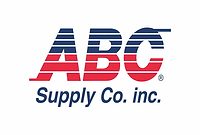Homeowner Shift: 4 Tips to Improve Post-Pandemic Customer Interactions
.jpg?1635950007)
Backlog is inevitable in the home services industry, but the past year has been a reminder of just how unforgiving these delays can be for contractors and homeowners alike. The pandemic directed a spotlight on the value of loving the place you live. In addition, the current housing market has many homeowners choosing to renovate and remodel their homes, with some trying to draw more value from a bull resale market and others reacting to sticker shock by choosing to renovate existing homes rather than buy new.
All told, the pandemic has put home services front and center. And throughout the year, that amplified demand has at times reverberated into heightened prices for essential building necessities — as well as unintended and uncontrollable delays or escalated contract prices that may lead to uncomfortable conversations with homeowners.
We may not be able to dictate the direction of the supply market, but we can control how we communicate these delays and pricing changes to homeowners in ways that preserve the relationship. Here are four tips to help facilitate those conversations.
1. Don’t assume homeowners are aware of pandemic-related shortages or delays
When running a business or working on day-to-day projects, it can be easy to fall into the trap that everyone is aware of just how much the pandemic has impacted supply. But for many homeowners, that first interaction with you or your sales team could be their first time hearing about shortages or price spikes. As you’re communicating this to potential customers, know that many other contractors are feeling the same pressures.
Take the time to walk them through the details that go into your bid, rather than assume what the homeowner knows or doesn’t know. For example, using a digital platform with dynamic pricing fields can show homeowners in real time how their selected materials will impact the bid price and can segue naturally into a conversation about supply and inflated prices across the industry.
Recognizing that supply and demand for essential materials may continue to fluctuate in the months ahead, I suggest leaning into the familiar adage: “Under-promise, then over-deliver.” It will always be easier to tell a homeowner a project will be done a week or two ahead of schedule than it will be to push a start or end date back. Being realistic at each stage of the process — from developing the estimate to every moment after — will lend added credibility to your partnership.
2. Clearly communicate delays or potential price increases – and don’t sit on bad news
When it comes to project delays or unexpected price spikes on essential materials, the worst time for a homeowner to find out is once the job is done. Sharing bad news or unanticipated change orders are never fun conversations to have with customers, but they’re an unavoidable part of the job. Getting on a call with the homeowner to explain why an adjustment is needed will help them understand the change from your perspective and help justify the added expense.
It’s also best practice to provide notice both verbally and through written conversation, so that if the homeowner has additional questions — or if they accuse you of trying to throw added charges onto their bill at the end of the process — you’ll have a well-documented paper trail to back you up.
3. Ensure all parts of your business are communicating the same message to homeowners
Communication is key in any profession. According to John Kenney of Cotney Consulting, no organization can be successful if they can’t communicate properly — both to internal teams and externally to homeowners and subcontractors. This extends across every touchpoint between the homeowner and your organization but is arguably most important as your sales team develops the estimate and adds more work to the pipeline. Homeowners may approach your company with certain deadlines in mind, so if your sales team isn’t acutely aware of supply or workload backlogs that are limiting resources, they may be inadvertently setting you up for uncomfortable conversations down the line.
Ultimately, avoiding these issues comes down to clear, honest communication within your organization. If you haven’t already, develop consistent processes that ensure clear lines of communication between your organization and those you partner with. When building these processes, be sure to solicit opinions from people across all parts of the business to ensure you’re able to effectively communicate with each group.
4. Leverage software to stay organized and transparent with homeowners
Customer experience is at the forefront of everything we do in the home services industry, and as the pandemic showed, contractors who were already set up on digital platforms were ahead of the game. Investing in a digital platform for business will continue to provide added benefits over pad-and-paper communication.
With modern home contracting sales software, the entire sales process can now be managed digitally. Software offers the ability to dynamically adjust pricing and timelines within contracts, allowing real-time changes to be made to bids. Being able to quickly align on changes can help conserve resources and reduce backlog, as well as provide homeowners with transparency into the cost of services.
With fall projects lining up, there’s a chance you may need to reset homeowner expectations on timing and pricing. But by offering homeowners a transparent look into your business and the issues affecting the industry, you’re setting yourself up well to manage difficult conversations in a positive way that builds long-term trust.
Looking for a reprint of this article?
From high-res PDFs to custom plaques, order your copy today!





